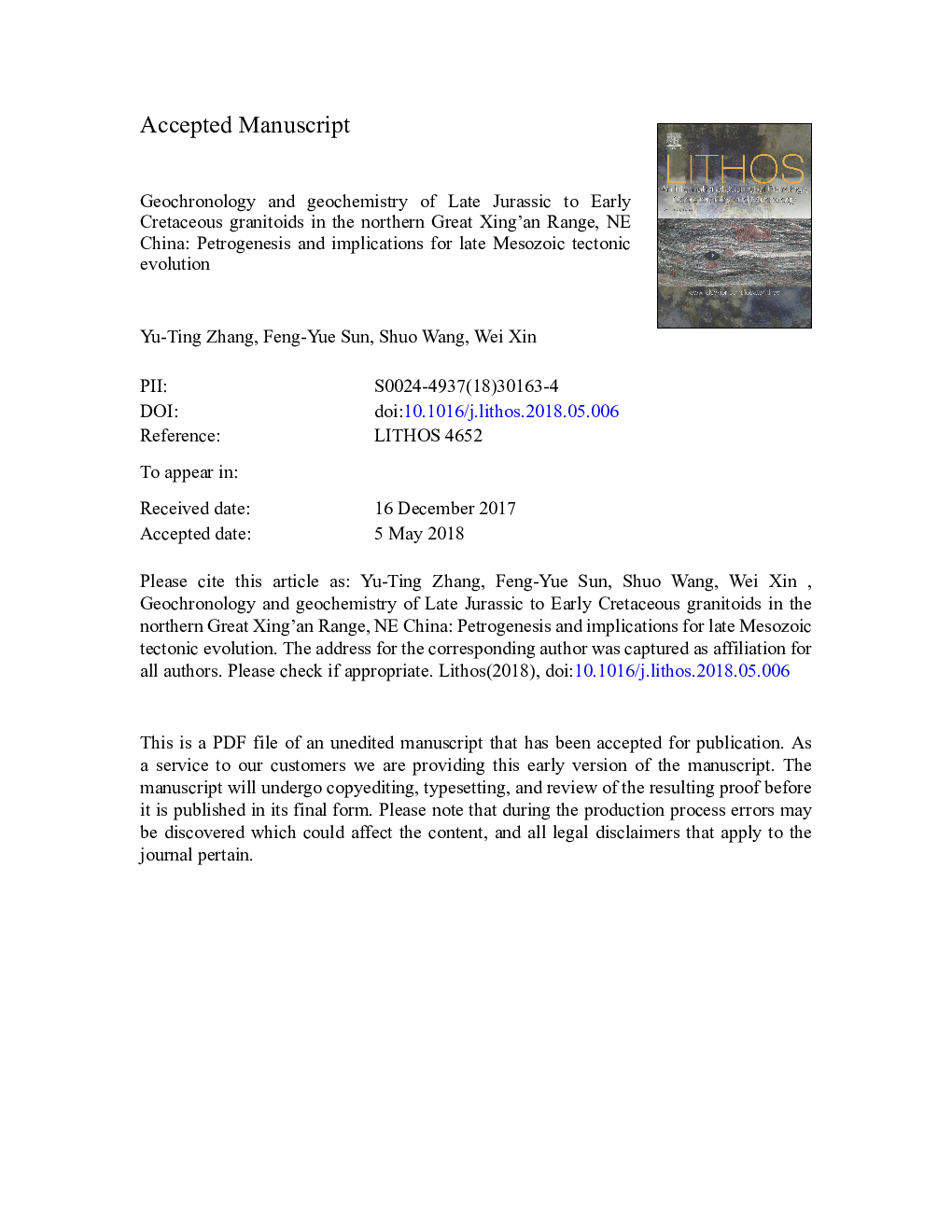| کد مقاله | کد نشریه | سال انتشار | مقاله انگلیسی | نسخه تمام متن |
|---|---|---|---|---|
| 8911588 | 1638618 | 2018 | 60 صفحه PDF | دانلود رایگان |
عنوان انگلیسی مقاله ISI
Geochronology and geochemistry of Late Jurassic to Early Cretaceous granitoids in the northern Great Xing'an Range, NE China: Petrogenesis and implications for late Mesozoic tectonic evolution
دانلود مقاله + سفارش ترجمه
دانلود مقاله ISI انگلیسی
رایگان برای ایرانیان
کلمات کلیدی
موضوعات مرتبط
مهندسی و علوم پایه
علوم زمین و سیارات
ژئوشیمی و پترولوژی
پیش نمایش صفحه اول مقاله

چکیده انگلیسی
This study provides new zircon UPb geochronological and geochemical data for Late Jurassic to Early Cretaceous granitoids in the northern Great Xing'an Range (GXR), NE China, and uses these data to constrain the late Mesozoic tectonic evolution of the GXR. The zircons from these granitoids are magmatic, as indicated by their appearances during cathodoluminescence imaging and high Th/U ratios (0.21-2.35). Zircon UPb dating indicates that the granitoids formed during the Late Jurassic (~161â¯Ma) and Early Cretaceous (~132â¯Ma). The Late Jurassic granitoids (LJG) are dominantly monzogranites with high SiO2 and Na2Oâ¯+â¯K2O contents, and low MgO and FeOT contents. They are metaluminous, enriched in the light rare-earth elements (LREE) and the large-ion lithophile elements (LILE), depleted in the heavy REE (HREE) and high-field-strength elements (HFSE; e.g., Nb, Ta, Ti, and P), and have an adakitic affinity. The zircons from these monzogranites yield εHf(t) values of +5.7 to +8.2 and two-stage model ages (TDM2) of 749-618â¯Ma. These results indicate that the primary magma for the Late Jurassic granites was originated from partial melting of a thickened lower-crustal source. The Early Cretaceous granitoids are dominantly metaluminous to peraluminous porphyritic granites with higher HREE contents than the Late Jurassic monzogranites. They display negative Eu anomalies and have εHf(t) values of +3.1 to +9.0 with corresponding TDM2 ages of 877-553â¯Ma, suggesting they formed from magmas generated by partial melting of juvenile lower-crustal material. Combining these data with the geochemistry of coeval volcanic rocks within the GXR, we infer that the northern GXR records a late Mesozoic transition from compression to extension. The compression was most likely related to the Middle Jurassic closure of the Mongol-Okhotsk Ocean, whereas the extension was related to delamination of a thickened region of the lithosphere and/or subduction of the Paleo-Pacific Plate beneath Eurasia.
ناشر
Database: Elsevier - ScienceDirect (ساینس دایرکت)
Journal: Lithos - Volumes 312â313, July 2018, Pages 171-185
Journal: Lithos - Volumes 312â313, July 2018, Pages 171-185
نویسندگان
Yu-Ting Zhang, Feng-Yue Sun, Shuo Wang, Wei Xin,